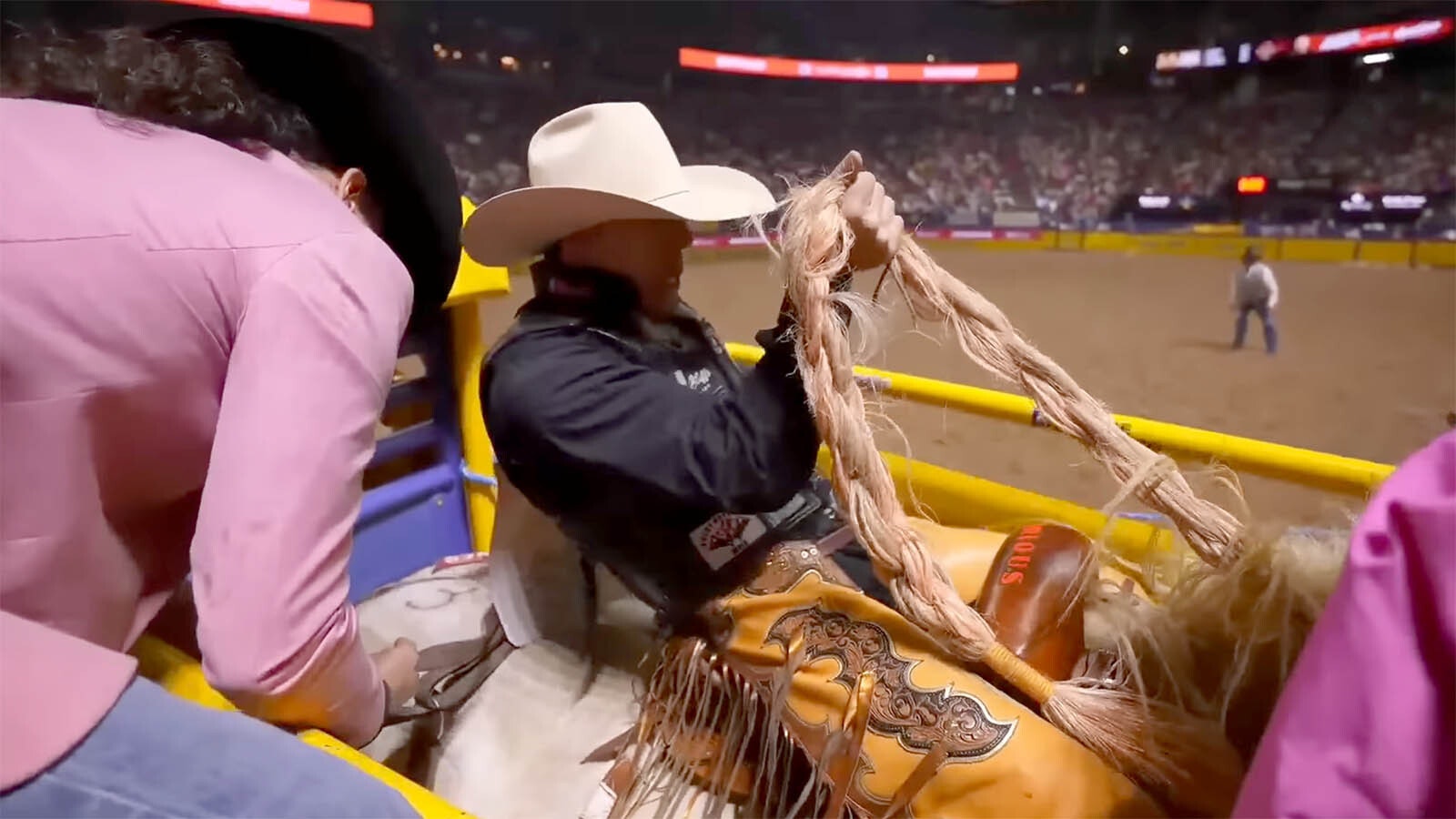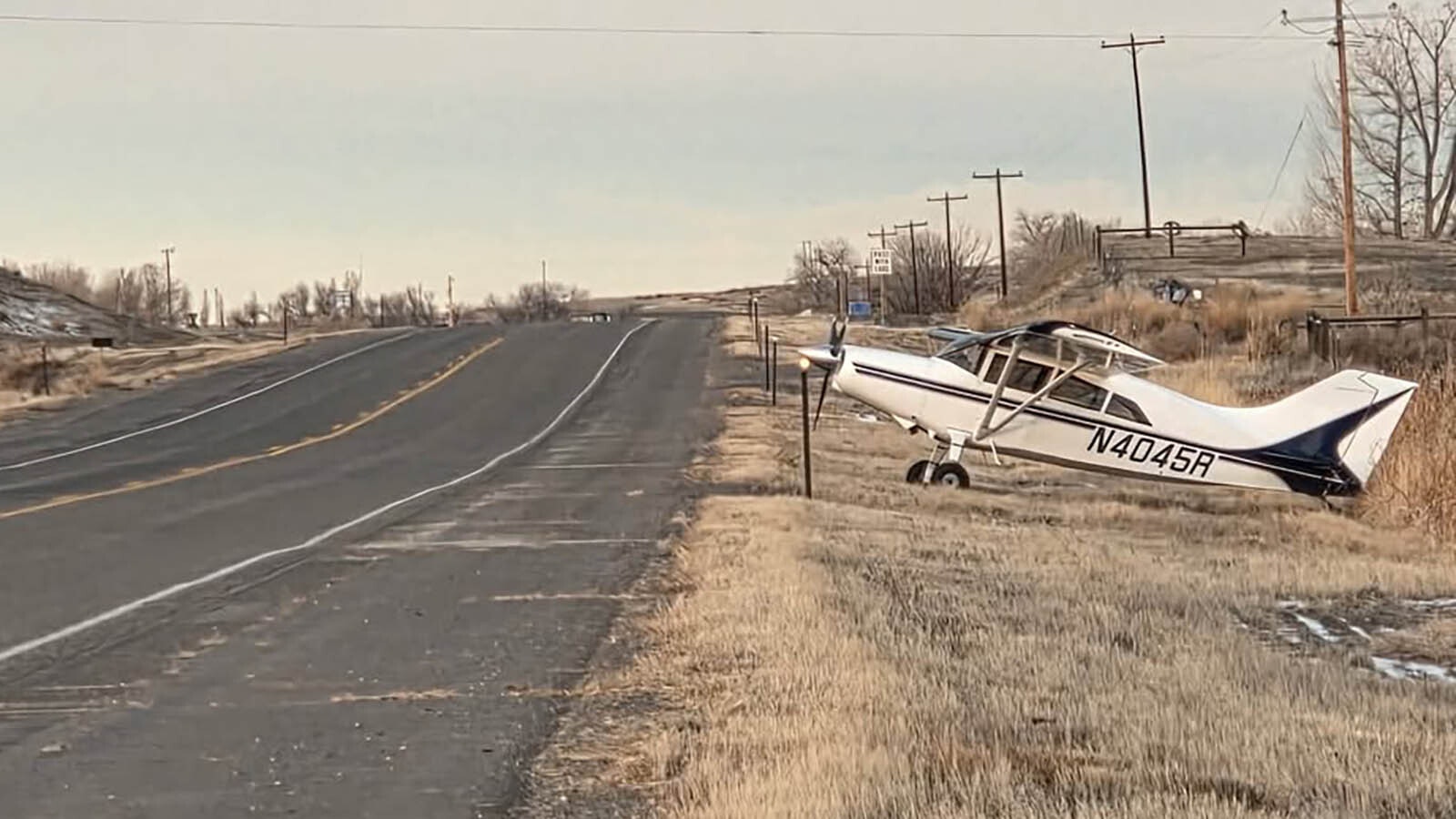Wyoming has its own true-life version of the classic film “Hoosiers” in the story of the 1949 boys high school basketball team from the tiny southwest coal mining town of Reliance.
The Pirates shocked the Cowboy State that year when they reached the Wyoming Class A championship game as a huge underdog. To get there, the school of 105 students in a town of 710 residents, beat powerhouse Cheyenne High School in the state semifinals. The Indians were the defending state champions and had won six of the past seven titles.
Cheyenne had around eight times more students than Reliance, based in Wyoming’s largest city with a population of around 30,000 back then. It was a true David vs. Goliath tale, just like the 1986 movie “Hoosiers,” the fictional tale of a small-town Indiana basketball team that wins a state championship despite insurmountable odds.
Spiro Varras, now 94, played on that Reliance team and still remembers that season fondly from 76 years ago.
“It gives us great memories,” said Varras. “We had such good friendships, relationships built from that year.”
In 1949, Reliance was a coal mining camp 8 miles north of Rock Springs, a tight-knit cultural melting pot that united over a love for sports, said George “Bud” Nelson, 93, a junior on the ’49 team.
“That was the only thing we had to do was to do things together,” Nelson said.
The Pirates had no players taller than 5 feet, 11 inches, a team that looked better equipped for crouching down to pick up lumps of coal than shooting a ball into a net.
“We didn’t have any size,” Varras said.
The Kemmerer Gazette affectionately referred to the Pirates as “the little giants from southwestern Wyoming.”
Although small in stature, the Pirates were a scrappy bunch, emblematic of a community in which nearly every member was connected to the coal mines in some way.
Nelson also said their confidence was high due to their hardscrabble upbringing and their chemistry with each other was unmatched, having played basketball together nearly their whole lives.
“If you play together for long enough time, it can alleviate your difference in size,” Nelson said.
Even their gym was blue collar, a “crackerbox,” as Varras called it, having to use two 10-second lines because the court was too short for regulation. If players arced their shot too high, they would risk hitting the ceiling, he added.
How They Got There
Reliance had a respectable regular season, finishing with a 14-9 record and 11-4 record in conference play. In the Southwest District tournament final, the Pirates nearly beat their much bigger rival Rock Springs.
In 1949, Wyoming only had two classifications for high school basketball, and Reliance was pushed into the larger of the two classes since it had more than 100 students.
The Pirates weren’t rattled, as Varras said their gritty, aggressive style and incredible ambition single-handedly pushed them to many of their victories. Also helping them was their coach Jack Smith, a former University of Wyoming player.
In the first round of the state tournament, Reliance dispatched Worland by a score of 43-35.
Next up in the quarterfinals were the mighty Cheyenne Indians, defending state champs.
Despite boasting three high schools now, Cheyenne only had one back then, significantly larger than Reliance with 829 students, according to the school yearbook. The Indians had won six of the past seven state championships entering that year and were considered the decided favorite against the little Pirates.
Reliance was completely unphased by the challenge, throttling Cheyenne by a score of 44-27. Varras said they were able to give the Indians fits with their much quicker speed and relentless pressing defense, a rarity in those days.
By this point Reliance had become the talk of what the Star Tribune described as the “prep dribble derby,” catching the attention of newspapers across the state.
The Wyoming State Tribune called their run “the most stunning upset of the tournament” and possibly the biggest surprise in the tournament’s history after 31 years of existence. The Tribune also commented “you can’t help but wonder what potion Coach Smith fed to his scrappers.”
Their next opponent, Lusk, also had a Cinderella story, beating Sheridan and Cody to get to their semifinal match with the Pirates. T
he late former U.S. Sen. Al Simpson was a senior on the Cody team. Simpson’s brother Pete told Cowboy State Daily he remembers visiting Al after the game in the locker room and having his brother tell him dejectedly, “I feel like a flushed toilet.”
In a battle of the underdogs, Reliance beat Lusk 39-28, led by Nelson’s 14 points. This set the Pirates up with another date with another Goliath, this time Casper Natrona, in the championship.
Championship Fever
The town of Reliance was abuzz with the success of their local heroes, and many turned their radio dials to a station in Laramie to hear the action live from the Half Acre Gymnasium, home of the 1943 national championship UW basketball team.
Varras said people working the hoists above ground in the coal mines of Reliance, Winton, Dines and Stansbury and listening to the game would write down the score on the coal cars, which they would periodically run below ground to keep the miners working down there abreast to updates in the game.
The Half Acre Gym was jam-packed as well, with 5,000 people showing up for the game, according to newspaper reports, although Varras said most were there for Natrona.
Although the atmosphere was a little intimidating at first, Varras said all concerns were wiped away as soon as the game got going.
Unfortunately, Casper was too much for the Pirates, who couldn’t keep up with the Mustangs size and physicality, losing 49-36. The Mustangs gave the Pirates a taste of their own medicine, Varras said, forcing them to make quick passes.
Despite the loss, there was still great pride in the Reliance community over what the Pirates had accomplished that season. It was Wyoming’s miracle moment, beating the unbeatable to get to the title game.
Varras became the first player in school history to be named to an all-state team and Smith was named the state’s coach of the year. The team was also honored with a celebration featuring dancing and entertainment when they returned home from Laramie, according to the Gazette at the time.
“They were so proud of us, they really catered to us,” Varras said.
Reliance’s success on the court carried over to the gridiron the next fall, where they advanced to the six-man football state championship before falling to Byron. The Pirates also had an even better regular season on the hardwood the next year but were eliminated in the district tournament before ever reaching state.
Reliance never advanced farther than the state semifinals again, and in 1959 the school was shuttered due the closure of the nearby Union Pacific coal mines.
Remarkable Lifelong Success
Varras went on to become an accomplished basketball coach for Rock Springs, winning four state championships and was inducted into the Wyoming Coaches Association Hall of Fame.
While there, he coached against his former Reliance teammate Bill Strannigan, who had an illustrious career of his own coaching at St. Stephens.
Nelson played a little college baseball at the University of Wyoming before being sent to Germany in the Korean War while serving in the military. While there, he made his battalion’s basketball, baseball and football teams.
He later went on to coach basketball at Western Wyoming College, where his teams occasionally played in the old Reliance gym.
Pirates’ assistant coach Thomas Manatos went on to work for former Wyoming Sen. Joseph O’Mahoney in Washington, D.C. According to the Wyoming football blog, Ernest Mecca, a junior on the team, was chief of staff for former Gov. Mike Sullivan.
Other players and coaches on the team ended up becoming engineers, doctors, teachers and superintendents, Korean War heroes and coaches.
Nelson credits the lifelong success of himself and teammates to the quality of teachers they had in Reliance and their smaller class sizes.
“Most youngsters worked hard and wanted to go to college,” he said.
That crackerbox gym the Pirates played is still there today as the school and its gymnasium were placed on the National Register of Historic Places in 1987, although they were converted into apartments.
For the handful of Pirates still alive today, the success they had on the hardwood 76 years ago still remains firmly imprinted in their memories.
“Thinking about that year takes me back to the good friends I’ve had and the few I still have from then, there aren't many left,” Varras said.
Leo Wolfson can be reached at leo@cowboystatedaily.com.












